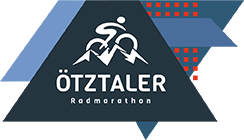Via Finailspitze to Schöne Aussicht

Ötztal Verified partner Explorers Choice
-
 Bella Vista HüttePhoto: Ötztal
Bella Vista HüttePhoto: Ötztal
Day 3 Vent Loop Tour
Author’s recommendation

Track types
Show elevation profileSafety information
Avalanche Hazard Scale1 (LOW)
Triggering is generally possible but only from high additional load in isolated areas of extremely steep terrain. Only small-sized sluffs and natural avalanches are expected. Snow layers are generally stable.
2 (MODERATE)
Avalanches may be triggered in case of truly heavy loads, especially on a few explicitly indicated, steep slopes. Large spontaneous avalanches are not expected. In general, the snowpack is well bonded except on some very steep slopes. Choose your route carefully, avoid the indicated slopes and exposed sections.
3 (CONSIDERABLE)
Triggering is very probable even from low additional loads, particularly on the indicated steep slopes. On some steeper slopes, medium or even fairly large spontaneous avalanches may occur. On most steepslopes the snow layer is only moderately or weakly stable. Expertavalanche knowledge is required. You must avoid the indicated steepslopes and highly exposed sections.
4 (HIGH)
Avalanches are likely to be triggered on many of the indicated steepslopes even if only light loads are applied. In some places, numerous medium-sized and also large-sized natural avalanches are expected.The snowpack is poorly bonded on most steep slopes. Choose your route according to these criteria, select only moderately steep terrain by avoiding the avalanche runout zones. Very expert avalanche knowledge is required.
5 (EXTREMELY HIGH)
Numerous huge or very large-sized natural avalanches are expected also in moderately steep terrain. Safe skiing is not possible anymore, not even in the marked ski area. The snowpack is poorly bonded and largely unstable. Don‘t go ski mountaineering at all!
Also visit lawine.tirol.gv.at
Tips and suggestions
Ski Mountaineering Rules
- If you enjoy activities amid nature always respect the local guidelines when you set out on a ski tour (for example: wildlife preserves, hunting enclosures, reforestation areas, information boards, etc.).
- Don‘t enter protected wildlife zones or feeding areas amid naturelandscapes, and avoid noise.
- Cross forest areas in winter only on sign posted trails or marked routes as wild animals can panic if they hear loud voices or noise.
- Learn more about the habitat of wild animals in the mountains, avoid getting too close to them. Watch them only from a safe distance. Please put your dog on a lead, it is absolutely irresponsible to take dogs into the forest without leashing them because wild animals suffer from food deficiency and weakness in winter.
- Excellent planning and time management: start your tour early enough and return before darkness. In spring you should be back on the hut or in the valley at 12 noon (avalanche hazard!) at the latest.
- Never cross forestation zones and areas with young plants and trees.
Ötztal Tourismus doesn‘t take any responsibility for the suggested tours. It is strongly recommended to enlist a certified local mountainguide. Glacier crossings are allowed only in a group by using a rope.
Before you set out on a tour you should inform someone down in the valley about the tour‘s destination and when you plan to be back. Anavalanche transceiver is an absolute must for Alpine ski mountaineering tours.
More details about ski mountaineering tours in Ötztal: https://www.oetztal.com/skitouren
Start
Destination
Turn-by-turn directions
DIFFERENCE IN ALTITUDE: Ascent 680 m, descent 860 m / Time 5 h
PEAKS: Similaun (3606 m), Finailspitze (3514 m), Similaun crossing (3606 m), Marzellspitze (3532 m), Hintere Schwärze (3624 m)
HUT CROSSINGS: Martin-Busch-Hütte (2501 m), Schöne Aussicht (2846 m), Hochjoch Hospiz (2413 m)
Schöne-Aussicht (2846 m, privately owned)
Serviced from late November to mid-May
T +39 (0) 473 6621 40
Public transport
Enjoy a both comfortable and relaxing train ride to the train station in Ötztal Bahnhof. You get off the train in ÖTZTAL Bahnhof where you change to a public bus or local taxi. The current bus schedule can be found at: http://fahrplan.vvt.at
Directions
The car drive to the Ötztal valley. Situated in Tirol, the Ötztal valley set off in southerly direction and is the longest side valley in the Eastern Alps. The journey with the car leads you through the Inntal valley to the entrance of the valley and further on through the valley. Among the toll motorways you can also use the country roads. A route planner will show you the easiest and most convenient way: https://www.google.at/mapsParking
The following parking options are available in the mountaineering village Vent- In summertime in front of the village (parking machine, only coins or EC card) and at the chairlift (at the ticket office of the mountain railways)
- In wintertime only at the chairlift
Cost: € 5,00 per day/car
Coordinates
Book recommendation by the author
Author’s map recommendations
Kompass #43 | Ötztaler Alpen, Ötztal, Pitztal | 1:50.000
Freytag&Bernd WK 251 | Ötztal, Pitztal, Kaunertal, Wildspitze | 1:25:000
Kompass | Bike- & Wanderkarte Ötztal | 1:35.000
Equipment
Recommended Ski Mountaineering EquipmentThe „standard ski mountaineering equipment“ is: touring skis with touring bindings, telescopic poles, climbing skins, ski crampons, digital avalanche transceiver, avalanche shovel, avalanche probe, firstaid kit and mobile phone. A „complete glacier equipment set“ contains: sit harness, two prusik loops of different lengths and ascenders, two HMS biners, icepick, climbing irons and rope. Pack your rucksack carefully and don‘t forget extra clothes for the descent, sun protection/cream, cold protection, enough food and drink. If you stay overnight at a mountain hut take toiletry articles and a hut sleeping bag with you!
LEVELS OF DIFFICULTY
- Easy: Short or moderately long tours, always easy, with ascents not steeper than 25° or slightly steeper only on short sections.
- Intermediate: Moderately long or long tours of intermediate difficulty with ascents up to 35° or slightly steeper only on short sections.
- Difficult: Very challenging and long or very long tours with ascents that can exceed 40°, comprising also climbing sections up to difficulty grade II (UIAA).
Statistics
- Content
- Show images Hide images
-
Route
-
Gradient
